Using CC Licenses and CC Licensed Works
20 Choosing and Applying a CC License
Introduction
The act of applying a CC license is easy, but there are several important considerations to think through before you do.
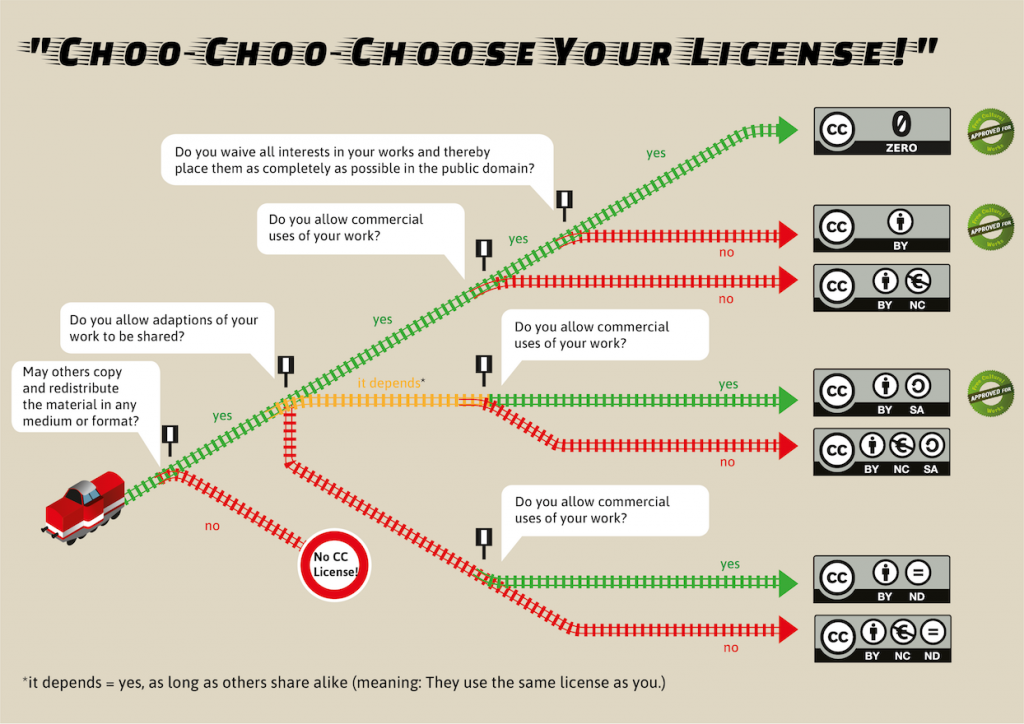
Learning Objectives
- Name the most important considerations before applying a CC license or CC0
- Apply a license using CC’s License Chooser and CC0 using CC’s Public Domain Dedication
- Evaluate which license to apply based on relevant factors
Big Question – Why it Matters
What should creators consider before applying a CC license or CC0 to their work? There are several options for creators who choose to share using CC. There are also many things to think about before applying any CC license or CC0, including whether you have all the rights you need and if not, how you must indicate that to the public.
Personal Reflection – Why it Matters to You
How would you go about choosing a particular CC license for your work? Do you know how to go about actually attaching a license to your work once you have chosen one? What if you change your mind about the license?
Acquiring Essential Knowledge
Before you decide that you want to apply a Creative Commons license or CC0 to your creative work, there are some important things to consider:
The licenses and CC0 are irrevocable. Irrevocable means a legal agreement that cannot be canceled. That means once you apply a CC license to a work, the CC license applies to the work until the copyright on the work expires. This aspect of CC licensing is highly desirable from the perspective of reusers because they have confidence knowing the creator can’t arbitrarily pull back the rights granted them under the CC license.
Because the licenses are irrevocable, it is very important to carefully consider the options before deciding to use a CC license on a work.
You must own or control copyright in the work. You should control copyright in the work to which you apply the license. For example, you don’t own or control any copyright in a work that is in the public domain, and you don’t own or control the copyright to an Enrique Iglesias song. Further, if you created the material in the scope of your employment, you may not be the holder of the rights and may need to get permission from your employer before applying a CC license. Before licensing, be mindful about whether you have copyright to the work to which you’re applying a CC license.
Which Creative Commons licence should I use?
The six Creative Commons licenses provide a range of options for creators who want to share their work with the public while still retaining copyright. The best way to decide which license is appropriate for you is to think about why you want to share and how you hope others will use your work.
For example, here are a few questions to consider:
- Do you think people might make interesting new works out of your creation? Do you want to give people the ability to translate your writing into different languages, or otherwise customize it for their own needs? If so, then you should choose a license that allows your work to be adapted.
- Is it important to you that your images are able to be incorporated into Wikipedia? If so, then you should choose CC BY, BY-SA, or CC0, because Wikipedia does not allow images licensed under any of the NonCommercial or NoDerivatives licenses except in limited circumstances.
- Do you want to give away all of your rights in your work so that it can be used by anyone in the world for any purpose? Then you might want to think about using the public domain dedication tool, CC0.
If you need some help deciding which license might be best for you, this flowchart – similar to the one at the beginning of this chapter – from CC Australia might be useful (please note the information it contains is not legal advice):
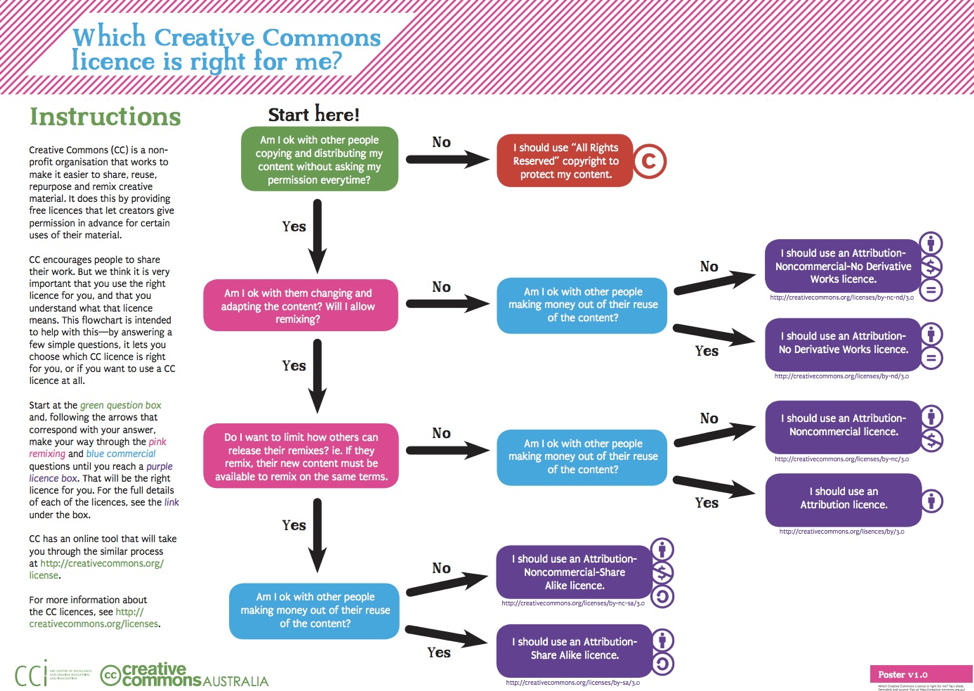
How do I apply a CC license to my work?
Once you’ve decided you want to use a CC license and know which license you want to use, applying it is simple. Technically, all you have to do is indicate which CC license you are applying to your work. However, we strongly recommend including a link (or writing out the CC licence URL, if you are working offline) to the relevant CC license deed (e.g., https://creativecommons.org/licenses/by/4.0). You can do this in the copyright notice for your work, on the footer of your website, or any other place that makes sense in light of the particular format and medium of your work. The important thing is to make it clear what the CC license covers and locate the notice in a place that makes that clear to the public. See Marking your work with a CC license for more information.
Indicating which CC license you choose can be as simple as this notice from the footer of BC Open Textbooks.
 Except where otherwise noted, content on this site is licensed under a Creative Commons Attribution 4.0 International License
Except where otherwise noted, content on this site is licensed under a Creative Commons Attribution 4.0 International License
If you are on a platform like Medium or Flickr, you should use the built-in CC licence tools on the platform to mark your work with the CC license you choose.
If you have a personal blog or a website, we recommend using the CC license chooser to generate code that identifies your chosen license. That code can be copied and inserted into your work online.
Take some time to play around with the CC license chooser now. After you select the boxes that indicate your preferences, the chooser generates the appropriate license based on your selections. Remember, the license chooser is not a registration page, it simply provides you with standardized HTML code, icons and license statements.
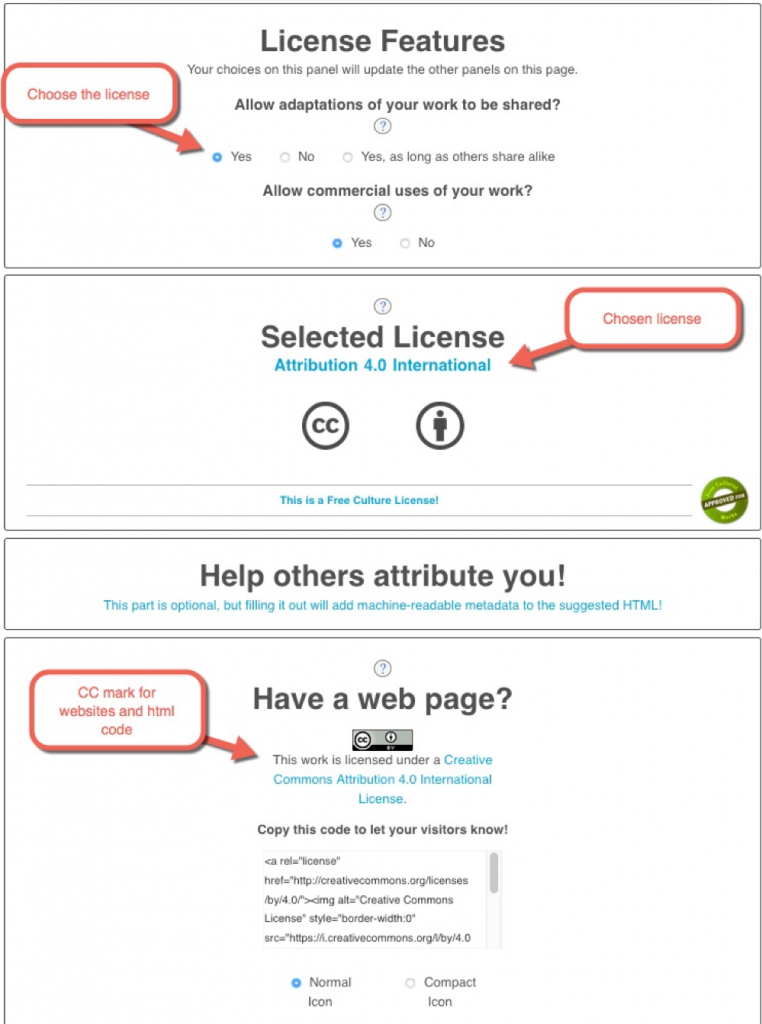
Do you see the text and icon just above the code? That text / links can also be copied and pasted onto your work to mark the work with a CC license.
If you want to mark the work in a different way or need to use a different format like closing titles in a video, you can visit https://creativecommons.org/about/downloads/ and access downloadable versions of all of the CC icons.
Whatever method you use to mark your content, there are several important steps for proper CC license marking. Here are three cases in which you will mark CC licensed works:
Marking your own work so that others can easily discover, reuse it and give you credit / attribution. The best practice for marking your work is to follow the TASL approach for your own portions of the content, and for the portions of the content created by others:
T = Title
A = Author (tell reusers who to give credit to)
S = Source (give reusers a link to the resource)
L = License (link to the CC licence deed)
When providing attribution, the goal is to mark the work with full TASL information. When you don’t have some of the TASL information about a work, do the best you can and include as much detail as possible in the marking statement.
Note, that starting with Version 4.0 the licenses no longer require a reuser to include the title as part of the attribution statement. However, if the title is provided, then CC encourages you to include it when attributing the author.
For more examples of how to mark your own work in different contexts, spend some time looking through CC’s extensive marking page.
See below for an example of marking an image with TASL information. The following image is a good example of CC marking because TASL with all appropriate links is provided in the attribution statement.
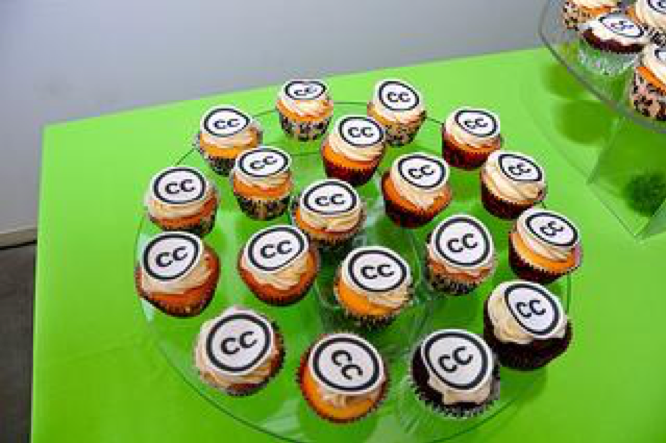
Indicating if your work is based on someone else’s work – If your work is a modification or adaptation of another work, indicate this and provide attribution to the creator of the original work. You should also include a link to the work you modified and indicate what license applies to that work.
Example here:
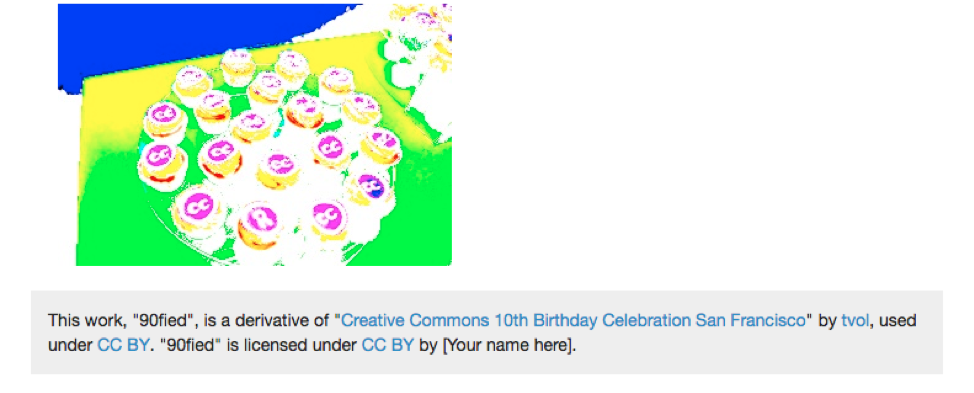
Marking work created by others that you are incorporating into your own work
Example here from a Saylor Academy course:
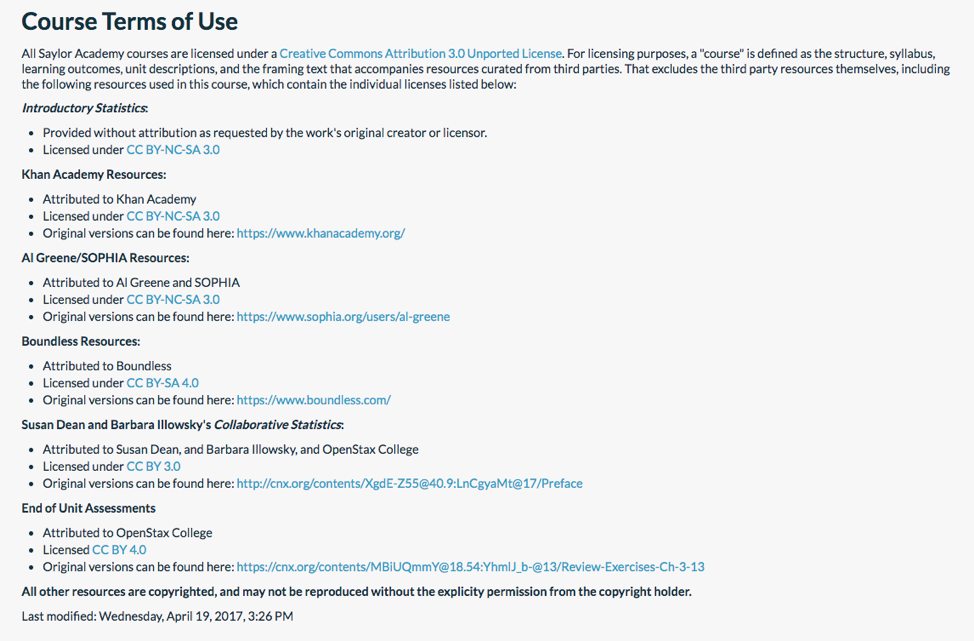
In every case, the goals are the same: you want to make it easy for others to know who created what parts of the work. (1) Identify the terms under which any given work, or part of a work, can be used. (2) Provide information about works you used to create your new work or incorporated into your work.
Final remarks
When applying a CC license to a work: 1) Use the CC license chooser to determine which CC license best meets your needs. Apply the license code if possible, or copy / paste the text and links provided. 2) If you are using an online platform, use the built-in CC license tools to mark your work with a CC license. 3) Mark your work and give proper attribution to others’ works using the TASL approach.
There is no single answer for which CC license is the best. It is important to remember why you are sharing and what you hope others might do with your work, before making your CC license choice.

